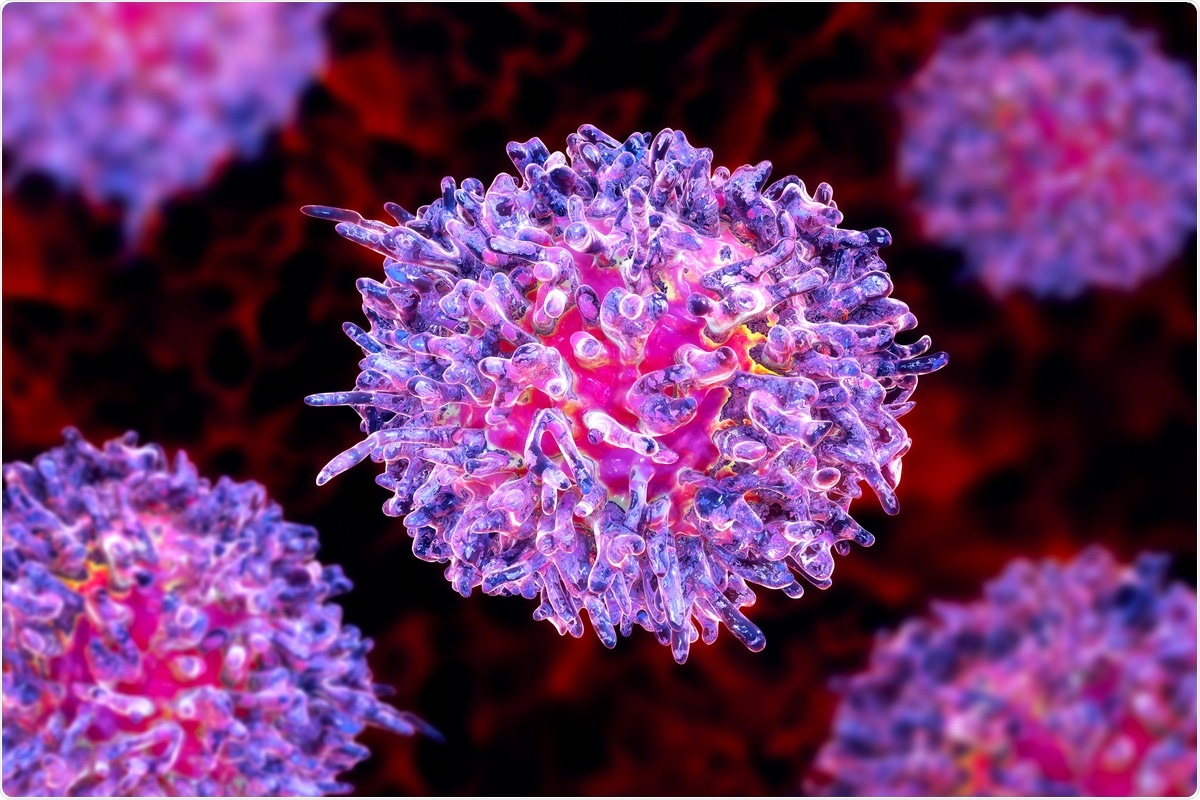Reviewed by Dan Hutchins, M.PhilMay 31 2021
Researchers from the Wellcome Sanger Institute and the University of Cambridge discovered that in children with neuroblastoma—a tumor of immature nerve cells—platinum chemotherapy created mutations in the genome that might lead to leukemia in some children later on.

Hairy cell leukemia, 3D illustration. Image Credit: Kateryna Kon / Shutterstock
The results, which were published in Blood on May 27th, 2021, might lead to the potential to determine which children are more likely to get secondary cancer. This, in turn, could help adjust their treatment plan to either prevent or prepare for these risks.
Secondary blood cancer is a difficult consequence of pediatric neuroblastoma cancer therapy. Every year, around 100 children in the United Kingdom are diagnosed with neuroblastoma, and those who receive high-risk therapy are at a higher risk of getting secondary blood cancer—leukemia—following neuroblastoma therapy.
Neuroblastoma usually requires intensive treatment that includes many chemotherapeutic drugs. These potent medications successfully destroy cancer cells, but they also have negative side effects, including altering the DNA of healthy cells, such as bone marrow cells. Damaged bone marrow cells develop into subsequent leukemia in up to 7% of pediatric neuroblastoma survivors.
The researchers sequenced the whole genomes of bone marrow and blood samples from two children who both acquired blood cancer after receiving high-risk neuroblastoma therapy.
They noticed that neuroblastoma chemotherapy sowed the seeds of secondary leukemia right at the start of treatment.
We have been able to unravel the root of secondary leukemia in these children which seems to lie in the early stages of neuroblastoma treatment. We hope to further investigate this to try to identify children at higher risk, and to inform a more tailored treatment plan to reduce the risk of secondary leukemia.”
Dr Sam Behjati, Study Co-Lead Author and Group Leader, Wellcome Sanger Institute
The researchers discovered that leukemia in both individuals contained mutations generated by neuroblastoma treatment. A larger study of 17 children treated for various tumors discovered another child who had received neuroblastoma therapy and acquired pre-leukemia seeds.
In the future, it may be viable to identify children who are at a higher risk of getting secondary leukemia by sequencing their genomes and identifying any genetic factors that may be precursors to blood cancer.
Neuroblastoma can be an aggressive disease that requires intense chemotherapy treatment. Occasionally this chemotherapy can cause serious adverse effects such as leukemia. So these findings are important to inform possible strategies for monitoring for secondary cancer and tailoring individual treatment plans. However, I should stress that it remains vital that children with high risk neuroblastoma continue to receive intense treatment for their cancer,” concluded Professor John Anderson of Great Ormond Street Hospital, who contributed to this research.
Source:
Journal reference:
Coorens, T. H. H., et al. (2021) Clonal hematopoiesis and therapy-related myeloid neoplasms following neuroblastoma treatment. Blood. doi.org/10.1182/blood.2020010150.